|
BULB LOG 10 --- 7th March 2007
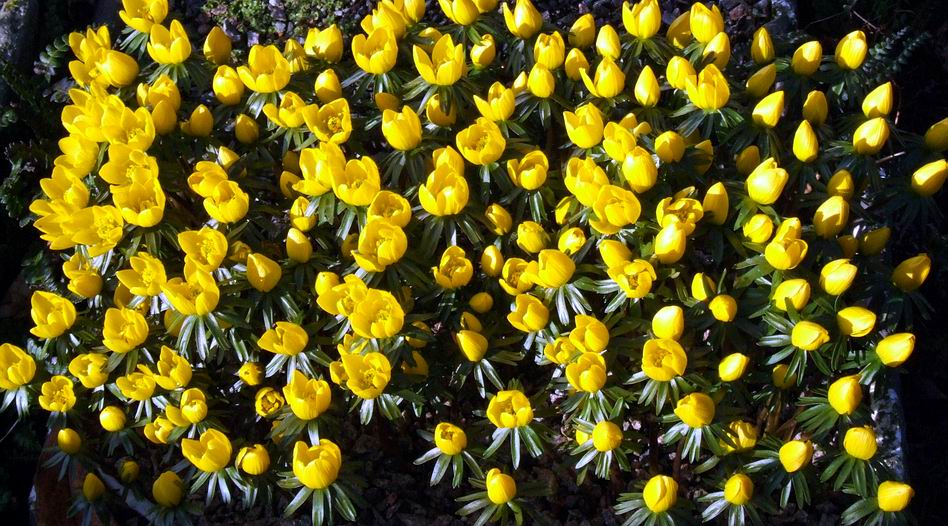
Eranthis 'Guinea Gold'
At last we are getting some brief spells of warm sunshine to open the flowers on the early bulbs. Eranthis 'Guinea Gold' is a superb cultivar and has to be one of the best aconites; it is a cross between Eranthis hyemalis and cilicica and these crosses are called the Tubergenii group. 'Guinea Gold' does have a fault though and that is, like many hybrids, it does not normally produce any fertile seed. I say 'not normally' because I never like to say a plant is sterile because sometimes through a genetic mutation or other cricumstances some seed may appear and if it does set any seed they should be treated like gold dust and carefully grown on. I have heard reports that there are some forms from the Eranthis Tubergenii group that are fertile.
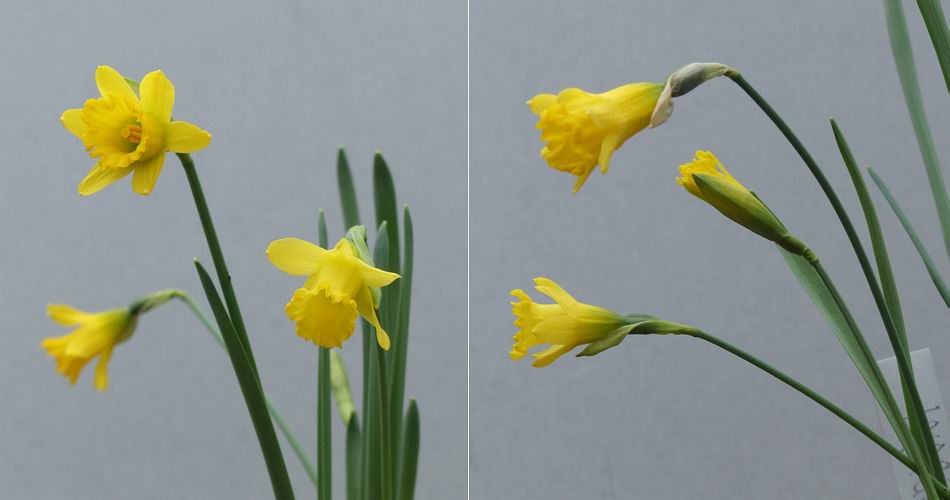
Narcissus asturiensis
I said I would return to Narcissus asturiensis and here are a few more of the forms that we have. It is perfectly hardy outside in our garden but due to its small stature I prefer to grow it in a pot under glass because if it has a fault it is that its stem tends to flop over and the flowers lie on the ground where they get chewed by slugs.
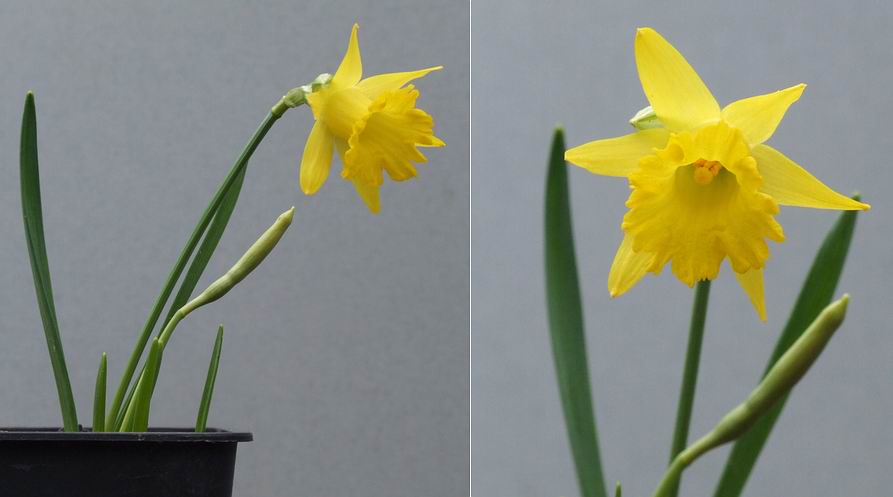
Narcissus asturiensis ssp vasconicus
This is my absolute favourite among all the forms we grow, Narcissus asturiensis ssp vasconicus, it is only 5cms high when it opens its flowers which are a good size with a wide flared trumpet. (According to some opinion this should be treated as a form of N .jacetanus.)
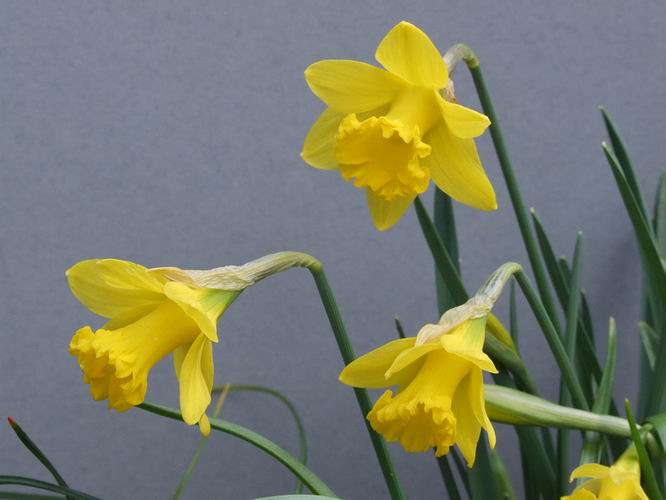
Narcissus jacetanus
For a number of years we have also been growing Narcissus jacetanus both from seed and bulbs passed on to us by friends. This species is very close to asturiensis and some authorities doubt its elevation to specific status, however it is another very good wee daffodil. I find it slightly more robust than most of our forms of asturiensis and the flowers are also larger in scale some have starry petals while others have large overlapping petals.
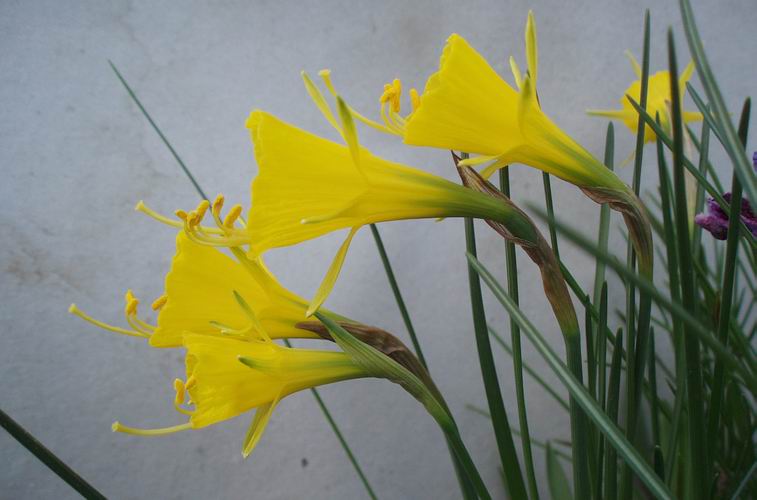
Narcissus bulbicodium nivalis
Narcissus bulbicodium also comes in many variations from the tall form, var conspicuous, commonly seen offered in garden centres to tiny forms like the one I show above. From reading John Blanchard's book it would seem to be closest to Narcissus bulbicodium var nivalis. The more you read about narcissus nomenclature the more you realise that it is confused to say the least, the plants have their own agenda and this does not always comply with the rules applied by the botanists. However the diminutive scale of the plant the shape of the corona and the exerted style and filaments suggest var nivalis to me.
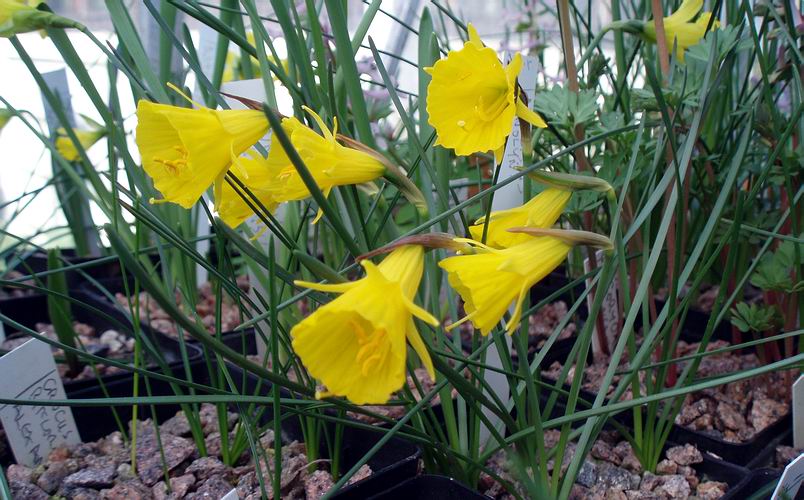
Narcissus 'Nolyn'
Yet another mystery plant, Narcissus 'Nolyn', which I received as an Alec Grey cross, the opposite to Nylon which is a Blanchard cross between N. romieuxii and cantabricus monophyllus made in 1949. This does not seem likely to me as this plant looks to have at least some N. bulbicodium blood in it, I suspect that there has been some confusion. It is very easy when you have a big collection of bulbs for labels to get lost, mixed up or for seeds to fall into the wrong pots resulting in all sorts of mix ups and confusion of the names.
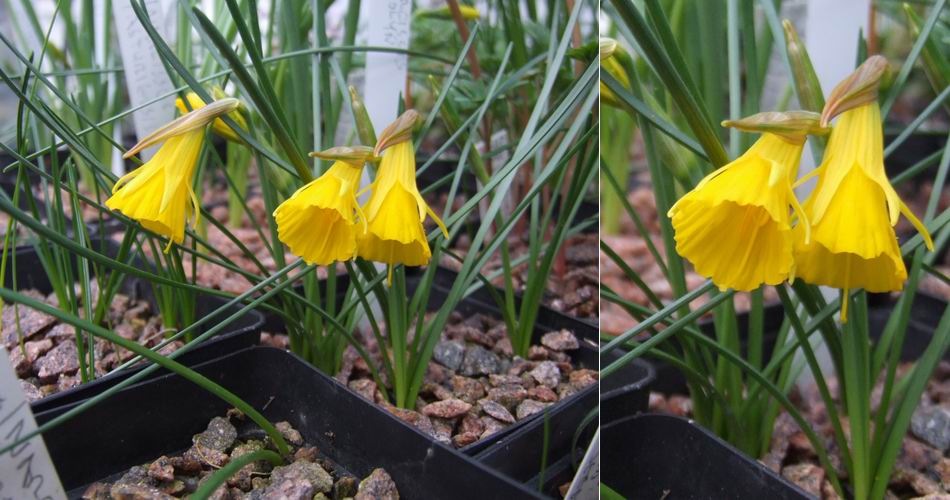
Narcissus 'Nolyn'
Here is the same plant photographed a few days later - it is a fine flower on a short stem and it is increasing reasonably well for me. If any one has any suggestions or can shed any light on this I would be delighted to know more.
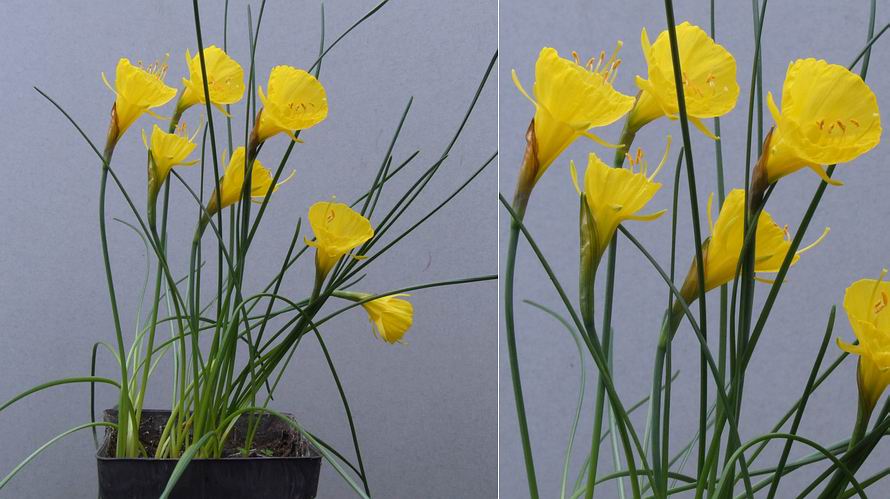
Narcissus unknown, ex Don Stead
I might as well carry on with another very similar narcissus with a question mark over its name. This one I received as a hybrid made by Don Stead without any further reference to the parentage, again it is a good plant and I suspect that N. romieuxii could be one of the parents, if indeed it is a hybrid at all.
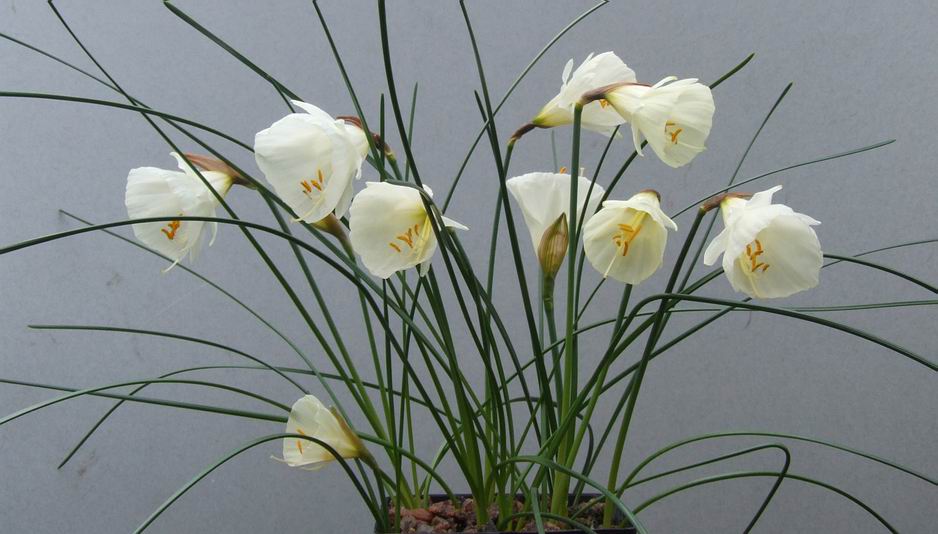
Narcissus 'Don Stead'
This I do know is a hybrid made by the late Don Stead and passed around Scotland for many years, it is now an officially registered hybrid.
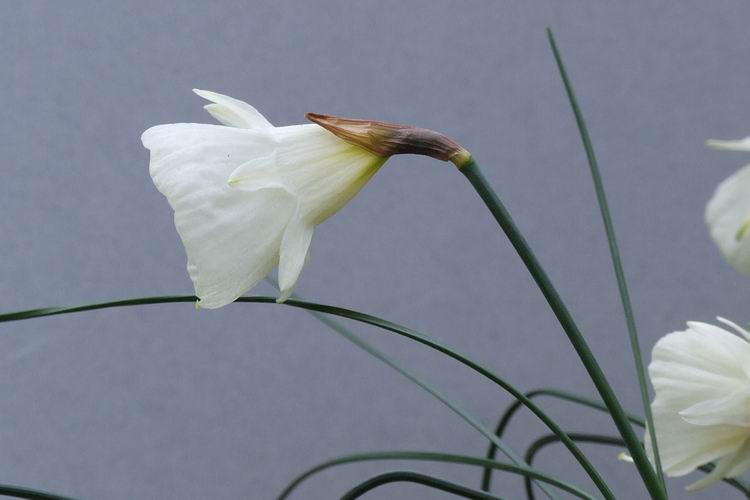
Narcissus 'Don Stead' flower
The shape of the flower, especially when viewed from the side, is very distinctive and makes it stand out from any other narcissus we have.
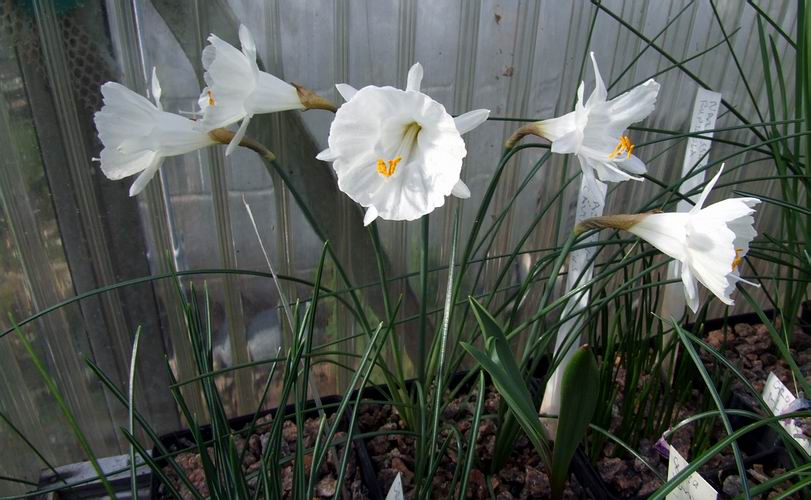
Narcissus cantabricus cantabricus
The very beautiful pure white Narcissus cantabricus cantabricus is the latest of the cantabricus to flower for us and it is always on a much shorter stem. Is the short stem because of a genetic trait or is it just that it comes into growth later when our light levels are higher and daylight hours longer?
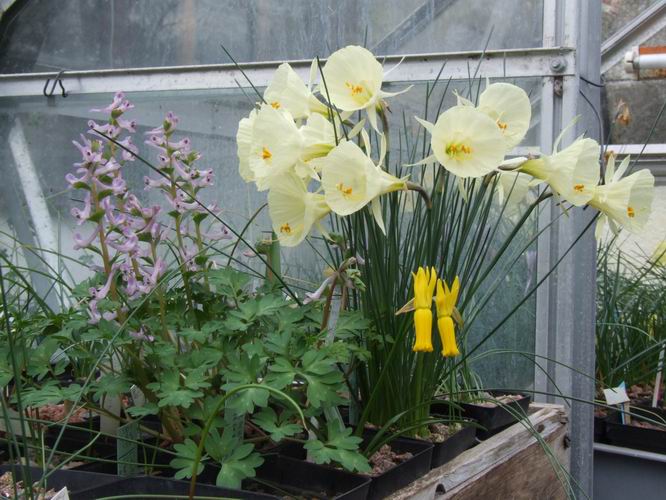
Narcissus found seedling
One final Narcissus of unknown parentage is this fine seedling that was one of the many that I lifted from the sand plunge and has been selected out as showing promise. It has large scented flowers on strong stems and it has increased in two years from a single bulb to the display above, despite still being in a 7cm plastic pot - I suspect romieuxii and bulbicodium may be the parents.
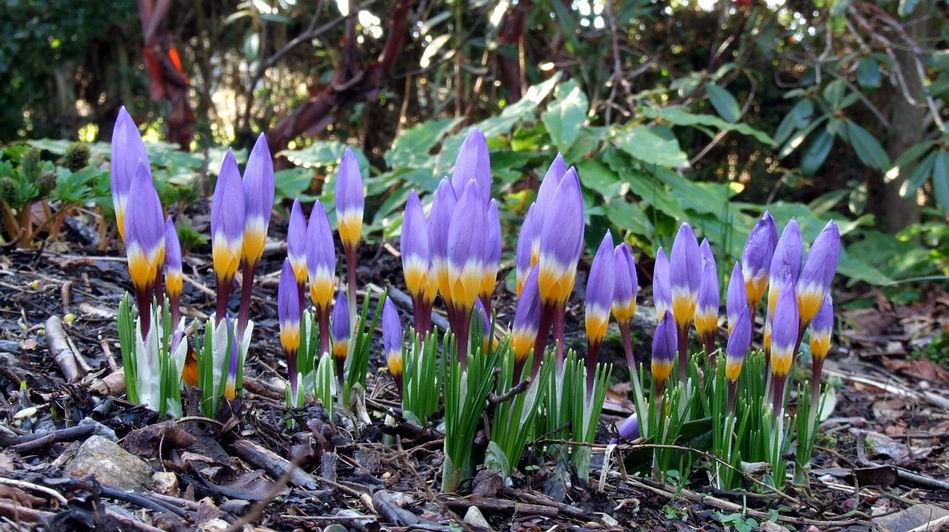
Crocus sieberi tricolour
In the garden Crocus sieberi tricolour is in its glory. I think this is a wonderful bulb with a remarkable colour range and if you count the colours in the flowers there are not three but four if you include white and I think this unlikely combination works because of the white band separating the golden yellow from the violet blue top.

Crocus vernus heuffelianus
A pot of seedling from the Crocus vernus heufllianus range where there is a dark zone of varying degrees towards the end of the floral segments - some can be very dramatic and a number have been given cultivar names.
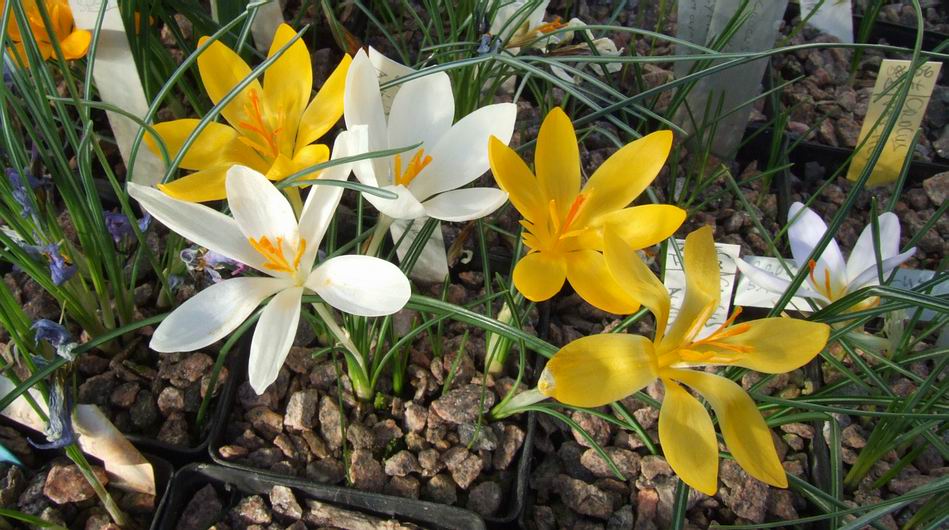
Crocus chrysanthus seedlings
A lovely white form has appeared in this pot of Crocus chrysanthus seedlings showing the big variation that you can get, even within a species, when growing from seed.
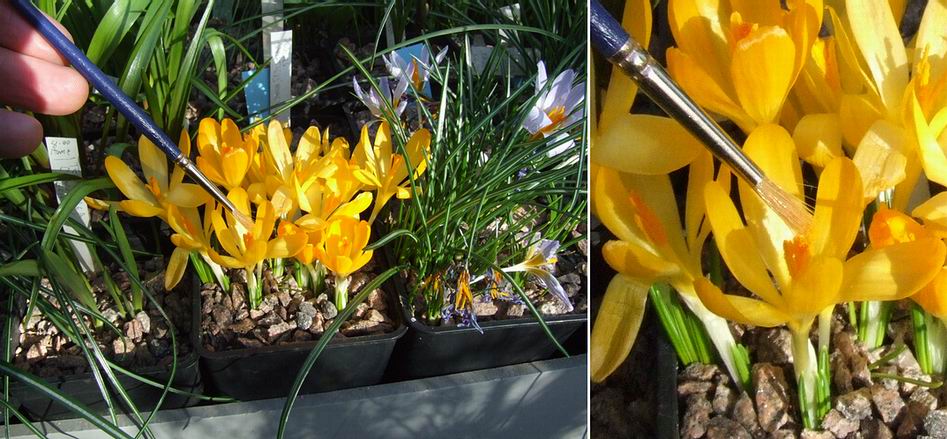
Pollinating Crocus civijicii
Of course to ensure that I get the best chance of seed from any of the bulbs I need to ensure that the flowers have been successfully pollinated. I have not seen any bees or other pollinating insects about yet this year so I have to do my own work transferring the pollen from style to stigma. I have been asked if I sterilise the brushes as I move around the different species and I do not. Ideally to prevent cross fertilisation between different species you should clean the brush to remove all traces of pollen or have a separate brush for the exclusive use of each pot. I occasionally give it a wipe if I am want a specific cross or I want to keep a species true but I am mostly pleased to see some hybrids appear. Even when you cross pollinate two species it is not until they flower, or if they have distinctive leaves, that you can be sure that your cross has been successful, you quite often find the species has been self pollinated but that is all part of the fun.
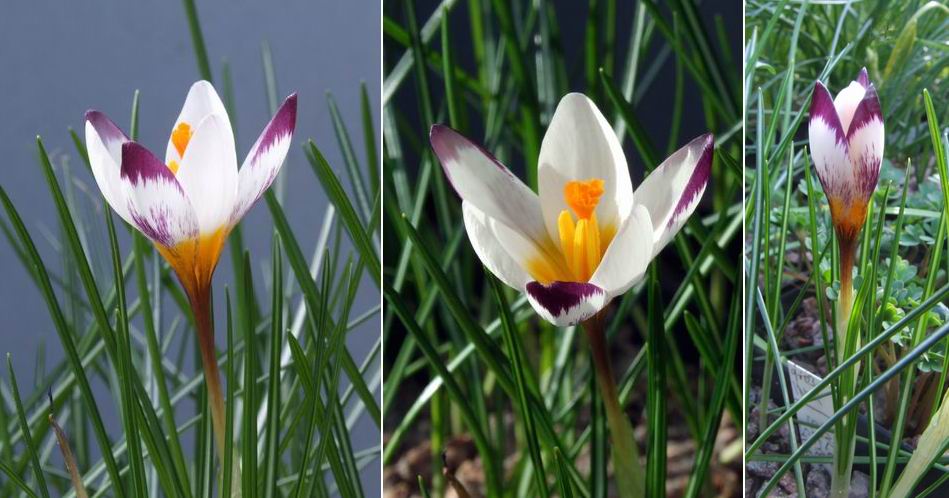
Crocus siebeii sieberi seedling
This is a seedling of Crocus siebeii sieberi which I did cross pollinate within the sub species as there is sufficient variation in the flowers markings to allow for some superb selections. Unfortunately I do not find that the corms of Crocus sieberi sieberi increase very quickly so it is difficult to bulk up a clonal selection.
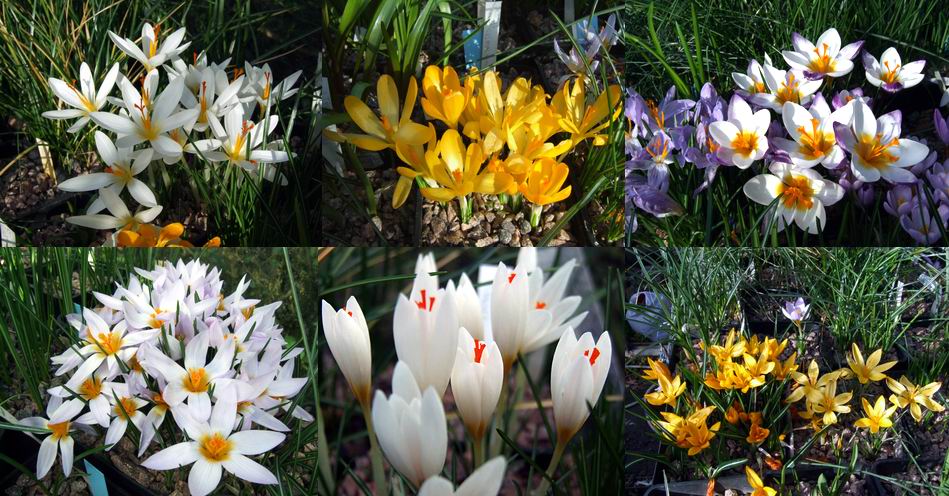
Crocus montage
There is so much to see at the moment and the sun has just come out, so I am off outside with my camera and I will leave you with a montage of some of the crocus that are looking good just now.
If any of you happen to be in Denmark on Saturday March 10th I am giving two lectures at Ringsted 25 km north from Naestved - the first lecture is at
^ back to the top ^
|

